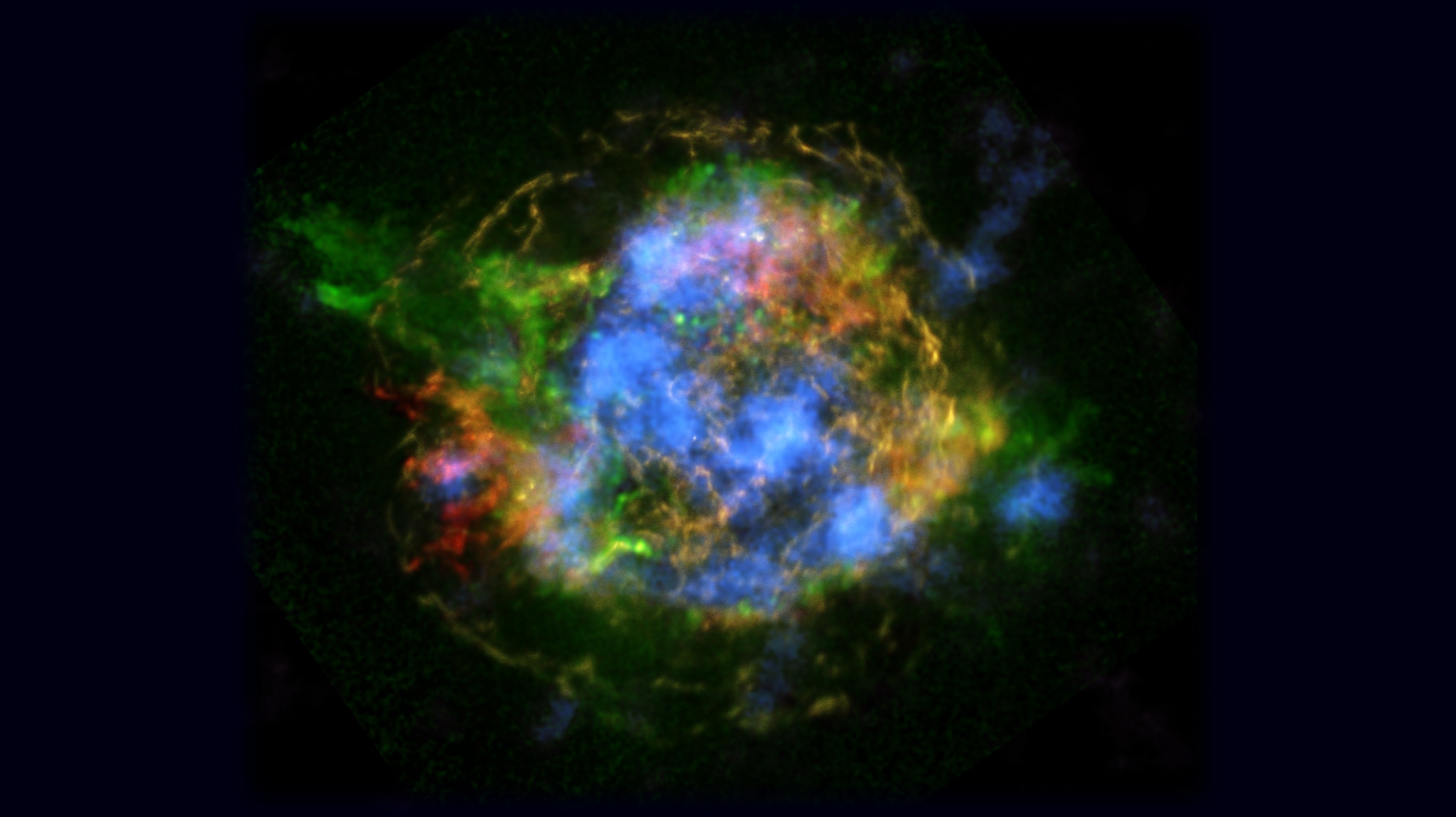Universe
ID: 30506
Cassiopeia A, one of astronomy’s most famous supernova remnants, was created when a massive star blew up leaving behind a dense stellar corpse and its ejected remains. How supernovas explode, however, has been a mystery for a long time. With the help of NASA’s Nuclear Spectroscopic Telescope Array (NuSTAR), scientists have been able to see into the heart of a supernova explosion for the first time, by detecting high-energy X-rays emitted by the radioactive isotope titanium-44. This image of Cas A shows titanium concentrated in clumps at the remnant's center (in blue). The irregular distribution of the clumps strongly suggests that material at the heart of the exploding star literally “sloshed” around, thereby allowing the shockwave to escape the core of the collapsing star and blast off the star’s outer layers. This NuSTAR map shows high-energy X-rays generated by titanium-44, shown here in blue. Lower-energy X-rays from non-radioactive material, imaged previously with NASA's Chandra X-ray Observatory, are shown in red, yellow and green.

Sloshing Supernovas

For More Information
Credits
Brian Grefenstette (Caltech): Scientist
Please give credit for this item to:
NASA's Goddard Space Flight Center/JPL-Caltech/CXC/SAO
NASA's Goddard Space Flight Center/JPL-Caltech/CXC/SAO
Short URL to share this page:
https://svs.gsfc.nasa.gov/30506
Missions:
Chandra X-Ray Observatory
NuSTAR
Keywords:
SVS >> X-ray
SVS >> Hyperwall
SVS >> Supernova
NASA Science >> Universe
SVS >> Presentation
https://svs.gsfc.nasa.gov/30506
Missions:
Chandra X-Ray Observatory
NuSTAR
Keywords:
SVS >> X-ray
SVS >> Hyperwall
SVS >> Supernova
NASA Science >> Universe
SVS >> Presentation











